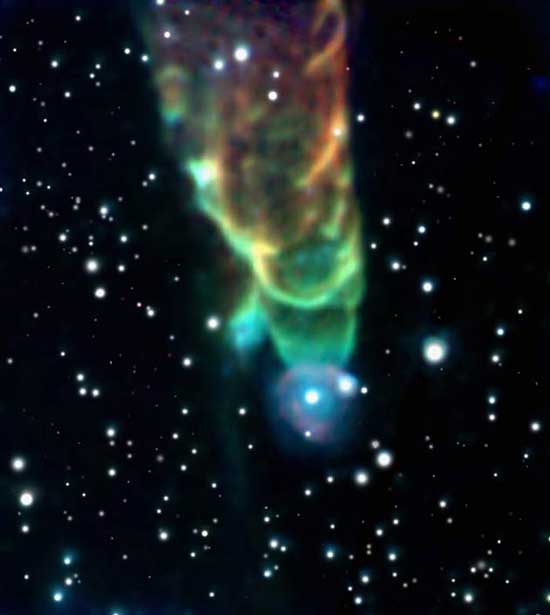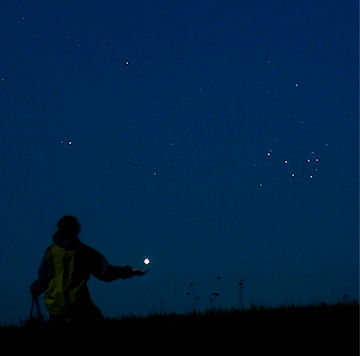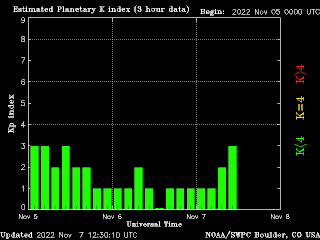Tornadoes
A
tornado is a violent, rotating column of air which is in contact with both the
surface of the earth and a cumulonimbus cloud or, in rare cases, the
base of a cumulus cloud. The most intense of all atmospheric phenomena,
tornadoes come in many shapes and sizes but are typically in the form of
a visible condensation funnel, whose narrow end touches the earth and
is often encircled by a cloud of debris and dust.

Tornado Family Wikipedia
page:https://www.jsmagic.net/rainbowclouds/page4.html
Today in the news the tornado that
struck Miss. was a mile and a half wide with winds of 160 miles an hour.

 Dozen dead in violent southern storms; 10 in Miss.
Dozen dead in violent southern storms; 10 in Miss.
AP - April 26, 2010 
 Tornado
Tornado
Google Videos
April Tornado Facts April 1959 to 2006
April 1959 to 2006
Total Reported Tornadoes 5376 with
15
F5 113 F4 329 F3 1059 F2 1856 F1 2004 F0
Of
the total tornadoes 28% would be classified as strong/violent during
this period. 44 States in the US have recorded tornadoes in April since
1959. During April since 1959 1193 deaths have been recorded from
these tornadoes. April has recorded a very high number of F5 tornadoes
since 1959, with an incredible 59 tornadoes that have had a track length
of greater than 50 miles. Also known for many Palm Sunday outbreaks,
April is a deadly month when it comes to tornadoes. www.tornado chaser.net/april .html .
Funnel
Cloud Wikipedia

Bernoulli's Principle Wikipedia
Space
Tornado Crystalinks

Mysterious radio waves emitted from nearby galaxy
New Scientist - April 23, 2010
www.spaceweather.com
POISED TO ERUPT: Already this
month, the sun has produced two of the biggest eruptions in years. They
occurred on April 13th and April 19th when magnetic filaments became unstable
and exploded. Could it happen again today? A prominence on the eastern
limb of the sun (photo ) resembles the precursors of those two
earlier blasts. Readers with solar telescopes are encouraged to monitor
developments.
WEEKEND
SKY SHOW: Did you catch Venus this weekend? Polish
photographer Marek Nikodem did:

Details: Nikon D700 / Nikkor 28-105, exp. 3-8 sec, ISO
1000-1600
He took the picture from the countryside near
Szubin, Poland, during a twilight conjunction between Venus and the
Pleiades star cluster.
"The planet Venus shone like the brightest
diamond in the sky; the Pleiades were more like tiny diamonds in a box,"
says Nikodem. "It was an amazing and wonderful show."
more
images: from Mahdi Rahimi of Esfahan, Iran; from Adrian New of San Antonio, Texas; from Tomasz Adam of Staszów, Poland; from Sorin Hotea of Sighet, Romania; from Siamak Sabet of Tehran, Iran;
SPACE SHUTTLE DISCOVERY: Consider the following photos of space shuttle Discovery. The big image
was taken at a range of just a few hundred meters by astronauts onboard
the International Space Station. The smaller, inset image, which shows
nearly as many details, was taken at a range of a few hundred thousand meters by French astrophotographer Theirry Legault of France. It is the
finest ground-based photo of a space shuttle to date.
"I
photographed Discovery on April 20th when it passed over France just a
few hours before landing in Florida," says Legault. "Numerous details are recognizable: the elevons, the
robotic arm--even the NASA logo!"
Legault, who is
legendary among astrophotographers for his extraordinary shots of spacecraft and other thinggs, took the picture through a 10" Meade
ACF telescope on a modified Takahashi EM-400 mount. The trick, he says,
was using a green laser to pinpoint the spacecraft and a custom-made
double joystick to track the shuttle as it glided across the sky. Click
here for the full story .
Current
Moon Phase
Moon Phases, April
2010
Last Quarter – April 6, 09:37
New Moon – April 14,
12:29
First Quarter – April 21, 18:20
Full Moon – April 28, 12:18
Moon Phases, May 2010
Last
Quarter – May 6, 04:15
New Moon – May 14, 01:04
First Quarter –
May 20, 23:43
Full Moon –
May 27, 23:07

Astronomy Picture of the Day NASA 
Mars Today:click on picture
Astronomy Without A Telescope – The Nice Way To Build A Solar
System
When considering how the solar system formed, there are a number of
problems with the idea of planets just blobbing together out of a
rotating accretion disk. The Nice
model (and OK, it’s pronounced ‘niece’ – as in the French city)
offers a better solution. Click to continue…

New
Images from Planck Reveal Star Formation Processes

An active star-formation
region in the Orion Nebula, as seen By Planck. Credits: ESA/LFI &
HFI Consortia
While most
newborn stars are hidden beneath a blanket of gas and
dust, the Planck space observatory – with its microwave eyes –
can peer beneath that shroud to provide new insights into star formation. The latest images released by
the Planck team bring to light two different star forming regions in the
Milky Way , and in stunning detail, reveal the
different physical processes at work.
Click to continue…
Lopsided
Growth at the Earth's Core PhysOrg - April 21, 2010
The inner
core grows at the center of the Earth from crystallization of iron in
the liquid outer core in such a way that solid iron permanently drifts
eastward. What has twisted the Earth¹s core so asymmetrically out of
shape?
'Goldilocks Zone' may go colder than previously thought PhysOrg - April 20, 2010
The survival of life on Earth is possible
only within a relatively narrow temperature range known as the
"Goldilocks Zone," which ranges from around 0 to 100°C. In many
ecosystems .... Goldilocks Planet Wikipedia Goldilocks Planet Google Videos
Goldilocks Planet Google Videos
Related
Stories
- 125 Large Northern Lakes Disappear
- How Global Warming is Changing the Wild Kingdom
- Space Ring Could Shade Earth and Stop Global Warming
- Climates North and South of Equator Said Linked
- Surprising Side Effects of Global Warming
IRIS Seismic Monitor USGS Ongoing Updates and Links
AWESOME PHOTOS>>>
FotkyJ04.pps
6860K View
Download







